
views
Making Your Marinade

Just use wine for simplicity. If you are short on time, simply soak your meat in fruity red wine for the time being. Choose between cabernet sauvignon, merlot, red zinfandel, or whatever your favorite may be. Use one 750 milliliter (25.4 fl oz) bottle for every three pounds (1.4 kg) of meat.
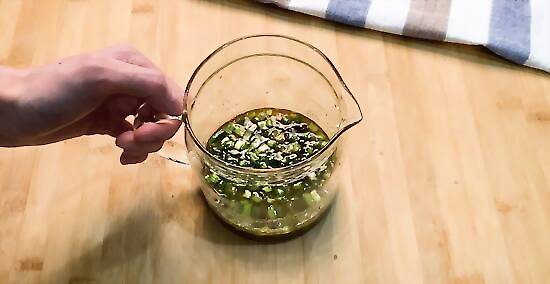
Use beef broth as a base. For every four pounds (1.8 kg) of meat, start with one cup (236.6 ml) of beef broth in a large mixing bowl. Add ⅓ cup (78 ml) of soy sauce and 1 tablespoon (14.8 ml) of olive oil. Whisk the liquids for an even mixture. Then prep and add the following: Four cloves of garlic, minced Two scallions, sliced thinly Four whole cloves 1.5 teaspoons (7.4 g) of ground ginger ¼ teaspoon (1.2 g) of ground pepper

Make tomato juice your base. For every three pounds (1.4 kg) of meat, add 1.5 cups (354.9 ml) of tomato juice to a large mixing bowl. Add ¼ cup (59.1 ml) of red wine vinegar and 2 teaspoons (9.9 ml) of Worcestershire sauce. Stir to mix evenly. Then stir in the following dry ingredients: 1.5 teaspoons (7.4 g) of salt 1 teaspoon (4.9 g) of sugar ½ teaspoon (2.5 g) of basil ½ teaspoon (2.5 g) of oregano ¼ teaspoon (1.2 g) of ground pepper
Marinating Your Meat
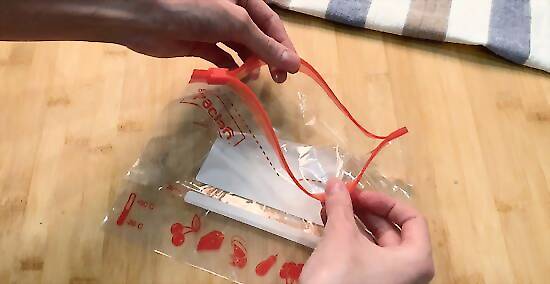
Use a resealable bag. Select a bag large enough to fit your cut of meat when sliced in half. If you are reusing a previously used bag (or if you are simply extra cautious), check the bag for any holes to avoid leaks.

Put your bag in a rimmed dish. Ensure that you won't have to clean your fridge after marinating your meat. Choose a tray, dish, or any other container whose sides will easily fit your bag. Set the bag inside so the dish catches any leaks, just in case the bag is somehow punctured later on.

Trim your meat. Set your meat on a cutting board. Slice away any extra fat along its surface. Then slice it in half. Use a long-pronged fork to poke holes in both halves so the marinade can penetrate further in more easily.
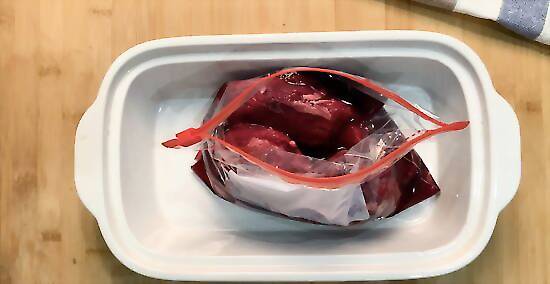
Add your ingredients. Insert your meat into the bag and then pour your marinade over it. Or, do the opposite and pour the marinade in first. Whichever you prefer.
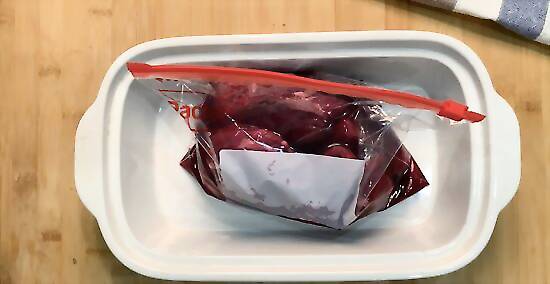
Let the meat soak. Once your meat and marinade are both in the bag, seal it shut. Lay the meat flat inside the dish so as much surface area as possible can soak in the liquid. Transfer the dish to your refrigerator. Let the meat soak anywhere from 8 to 24 hours before cooking. Flip it over periodically during that time so both sides are evenly soaked for consistent flavoring.
Adding Flavor after Marinating
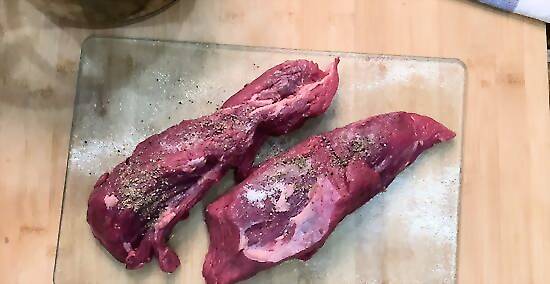
Season the meat. If you only used red wine for a marinade, but now wish you added more flavor, never fear. Simply pour the wine from the bag into a saucepan. Place the meat on your cutting board and absorb as much moisture as you can by patting it with paper towels. Then rub in a half-teaspoon (2.5 grams) of salt and pepper respectively.
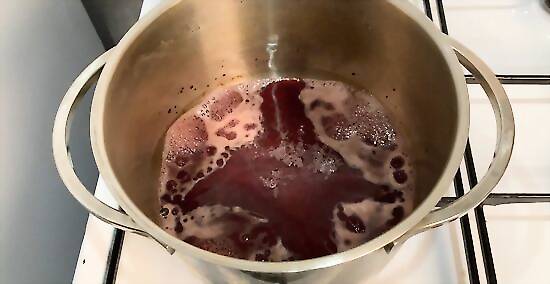
Reduce the wine. Set the burner under the saucepan to medium-high heat. Once the wine begins to boil, lower the heat to simmer. Leave uncovered for about a quarter of an hour, or until the wine reduces to approximately 1.5 cups (354.9 ml), or roughly half of its original volume.
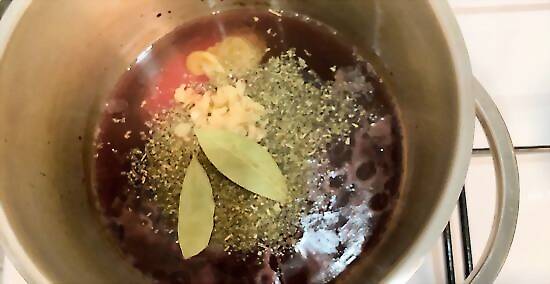
Add more ingredients. Pour about 1.33 cups (314.7 ml) of beef broth into the reduced wine, followed by a ¼ cup (59.1 ml) of tomato paste. Then stir in 1 tablespoon (14.8 ml) of Dijon mustard; 1 tablespoon (15 g) of herbes de Provence, four minced cloves of garlic, and two bay leaves. Continue to simmer for another five minutes.
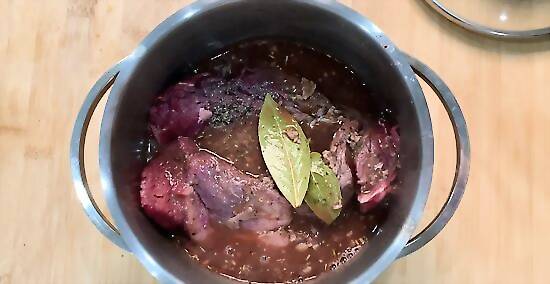
Recombine your meat and marinade. Place your meat in your crockpot or Dutch oven. Pour your new wine sauce over it. Cover your crockpot and set it to low heat and cook for eight to ten hours. For a Dutch oven, preheat your stove's oven to 325 degrees Fahrenheit (163 Celsius), cover your Dutch oven, and then bake for three and a half hours.

Shorten your cooking time. To speed things along, start cooking your meat before reducing the wine. Line the bottom of your crockpot or Dutch oven with olive oil. Transfer the meat into the pot or oven and begin cooking. Set the heat to low for a crockpot, or medium for a Dutch oven. Turn the meat over periodically so that each side browns evenly in the cooking oil.
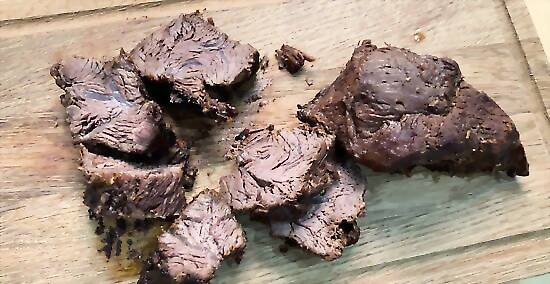
Finished.




















Comments
0 comment